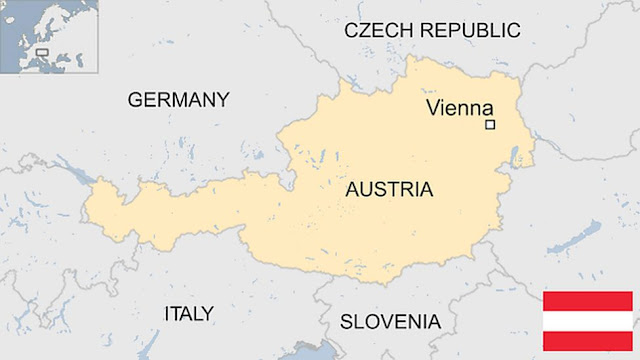Is Russia's Navy Dangerous for the West? Analysis.
Kirov-class
nuclear-guided missile cruiser Pyotr Veliky, the largest and heaviest class of
surface combatant warship in operation.
Defy the dangers! "Main Parade" of the Russian Navy in St. Petersburg: What message does Russia want to send?
Wednesday, May 31, 2023. Russia.
Russia is trying to boost the image of its navy after the incredible sinking of its flagship in the Black Sea, the cruiser Moskva.
[THE
UKRAINIANS RELEASED THE VIDEO OF THE LAUNCH OF THE NEPTUNE MISSILES THAT SANK
THE MOSKVA.]
Imagine what could happen if the ship was powered by a nuclear reactor like most Russian submarines!
News is constantly arriving from the Baltic Sea, which may soon occupy us along with Kaliningrad and Transnistria.
[WHAT WILL HAPPEN AFTER A NATO ATTACK ON KALININGRAD?]
APU began using small kamikaze drones with a flight range of up to 400 kilometers.
Even though Russia failed to organize the Victory Day parade on May 9, 2023, presenting only one T-34 tank in the country's central square, the Kremlin is ready to hold another event soon, the so-called "main parade of the Navy" in St. Petersburg.
After the bombings of Moscow, which Russia claims to be behind, this is improbable! The energy was from the Ukrainians; there are fears for almost all the ports where Russia has naval bases.
Russia is, or wants to appear, particularly vulnerable.
What kind of message Russia wants to send with this naval parade of the Baltic fleet is a puzzling question since the safety of such a sea force in a real war is measured by how quickly a tactical missile can reach ships.
According to the Russian state news agency TASS, the decision has been made, and the date has been chosen.
The parade will take place on July 30, and warships of the Baltic Fleet will participate, although the combat capability of this formation causes concern among the Russians themselves in principle.
Russia does not have the strength and vast numbers of the American military, especially when we add the rest of the NATO countries to these numbers.
In numbers and quality, it ranks last among the other fleets of the Russian Federation: the Northern Fleet, the Pacific Fleet, and the Black Sea Fleet.
For example, only one submarine in the Baltic, Dmitrov of Project 877 Paltus (NATO name Kilo), was built-in 1986.
Although it is fair to note that the shallow waters of the Baltic Sea are not hospitable to submarines in general.
The official flagship of the Baltic Fleet is the Project 956 Sarych destroyer Nastoychivy, commissioned in 1992. The common problem of the ships of this project is that the main engine and Moskit anti-ship missiles need to be more satisfactory in today's war.
The current "core" of the Baltic fleet is four Project 20380 corvettes (entered into service 2008–2014), built to an old design that was supposed to be armed with the Kh-35 and to fire missiles. While universal launch silos, compatible with Kalibr and Oniks missiles, were installed only on three Buyan-M class corvettes (entered into service with the fleet in 2015–2022) and also on three Project 22800 Karakurt corvettes (2018–2020).
The rest of the 29 total warships (not including amphibious assault ships) are represented by the following vessel types:
- Six Molniya-class guided missile cruisers (NATO name Tarantul)
- Six Project 1331-M anti-submarine corvettes
- Four Project 1234 Ovod corvettes and two Project 11540 frigates Yastreb
The main problem facing the Baltic Fleet of the Russian Federation is the very geography of the Baltic Sea. After Finland joined NATO, it eventually became the Alliance's inland sea.
In addition, all the bases of the Russian Baltic fleet – Kronstand and Baltiysk in the Kaliningrad region – are now close to tactical weapons. And, of course, there is no place for ships to hide in the Baltic.
In this light, if an all-out war breaks out, the entire Baltic fleet will only have as much time as short-range missiles to reach ships and coastal infrastructure.
Moreover, even deploying sea mines in the corridors would be enough to keep the entire Baltic fleet at bay.
But all these factors do not seem to bother the Russians to show off the warships, perhaps not so much to NATO as to the Kremlin leader.
Update: At the same time, and from Russian information sources.
The Ministry of Defense of the Russian Federation announced that the last warship of the Ukrainian Navy, "Yury Olefirenko," was destroyed due to a military operation in the port of Odesa.
According to the evidence presented, the strike took place at the position where the warships were.
The successful operation resulted in the destruction of the last operational warship of the Ukrainian Navy, the Yuriy Olefirenko.
This ship was an essential element of the naval forces of Ukraine.
Its destruction became essential during hostilities, affecting the balance of power at sea.
The Russian Ministry of Defense does not provide detailed information on the course of the operation and the details of the strike but confirms the success of the process.
Previously, the Ukrainian Navy used a converted landing craft, among other things, to bomb Russian-controlled territory.
Conclusion
After almost 15 months of war, Russia uses its warships as coastal artillery.
That is, near the coasts if they are protected by anti-aircraft missile arrays, UACVs. Drones, sea drones, and other weapons.
He should give more weight to the war equipment on land and weapons, Drones, UAVs, and high-tech and AI-assisted robots, rather than floating targets full of bewildered sailors!
@world.war.3.2023










Comments
Post a Comment
Hello, feel free to write your opinion.